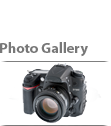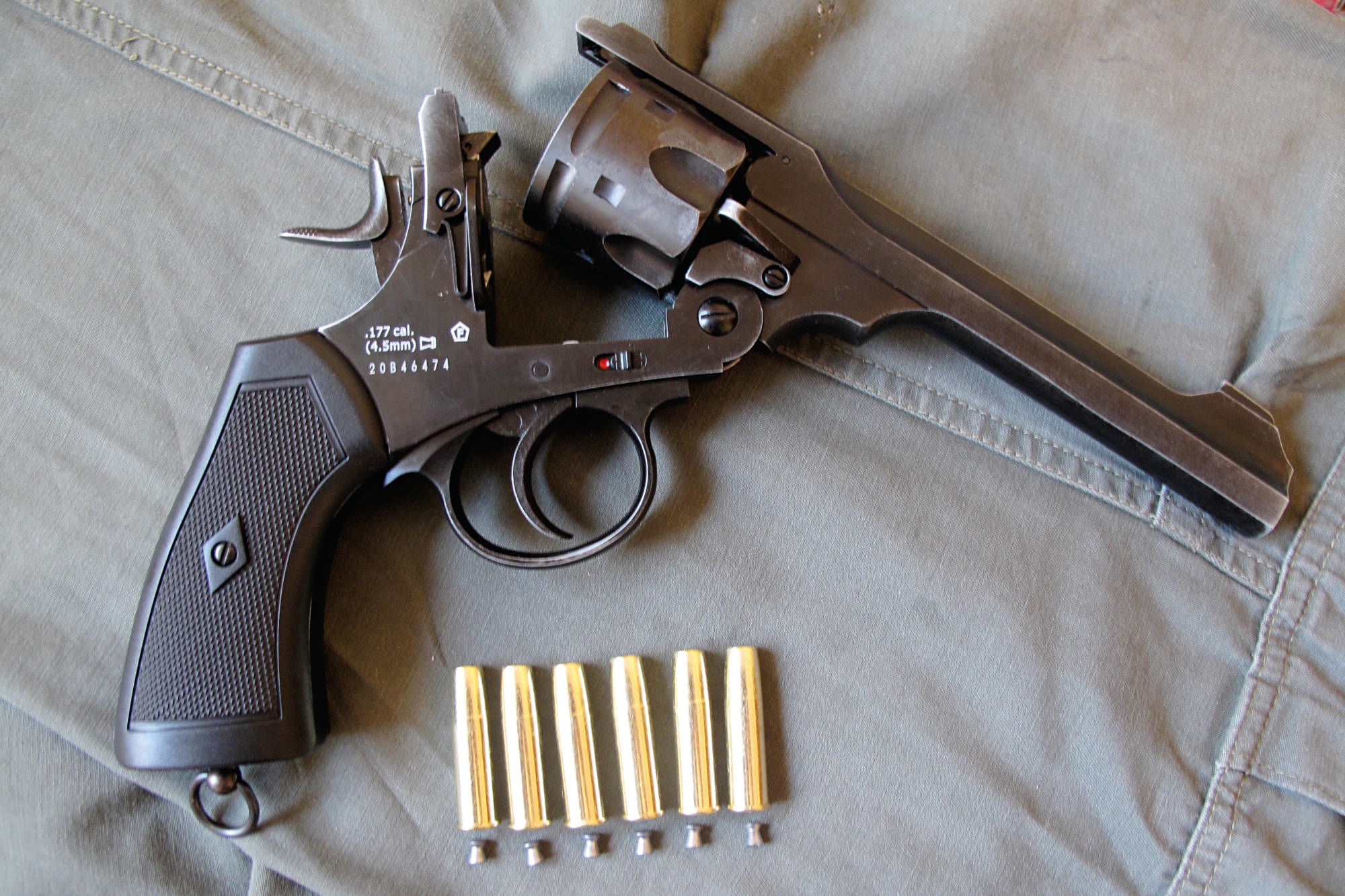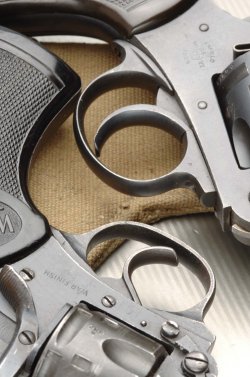
Sidearms
Before semi-automatic pistols saw the light of day, revolvers were the undisputed true sidearms.
Revolver, pistol, sidearm – the name does not really matter – the handgun is certainly not a “war weapon” in the strict sense. Despite what some people may think, the very fact of being available to military personnel is not sufficient to make the handgun a military weapon. The handgun is not a suitable weapon for modern-day conflicts, and it is usually kept as a service weapon mostly out of necessity. Members of certain army specialties are still in need of a small light spare firearm they can rely on under emergency situations, though they do not need this kind of weapon in high-intensity conflicts – where such a firearm would prove totally inadequate. So far the alternatives – i.e. “mini-machine guns” and Personal Defense Weapons – have not yet reached an acceptable compromise in terms of portability and performance. They are either too big, too heavy, too powerful or lacking firepower, with a tendency to fall out of control when blasting away… So much that, even today, military officers, Army and Navy officers, Special Forces and many more still carry their handguns.
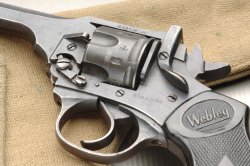
But what happened before that? Semi-automatic pistols appeared relatively late in the history of firearms. In fact, as it is the case whenever a radical change takes place, semi-automatic pistols went under severe scrutiny before armies eventually decided to adopt them as official service weapons. Only then did the handgun become a “war weapon”. You could not do without it, as it was the only self loading weapon that military officers – and not only them, just think of the cavalry - could carry at all times. As a matter of fact, “cavalry rifles” did exist, but a profitable use of this weapon required some training on the specific shooting positions and manual operation. Handguns, on the other hand, could be used rather easily and held in one hand, thus allowing the cavalryman to hold a firm grip on the reins with the other.
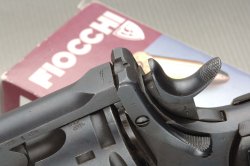
Military pistols, before automatic pistols came, also followed a Darwinian evolutionary process. From muzzle-loading pistols to black powder revolvers, which had the advantage of a high firepower – at least at the time – and fast shot repetition. The fact that these revolvers had an almost unbearable recoil did not really matter. The revolvers remained in service until and after the advent of semi-automatic pistols – cost also played an important factor in keeping revolvers in use.
Webley & Scott revolvers are a classic example of such a story. The model was adopted as a service weapon in the UK in the late 19th century. They were extensively used in the UK and in the colonies, including different versions which remained in service well beyond any expectation, for almost a century in dozens of countries. In particular, the model we are going to take a look, that is the Mk IV, was the service sidearm weapon of the British troops on two important occasions – it was also made available in two different sizes with a myriad of imitations. To put it in a nutshell, here is its story.
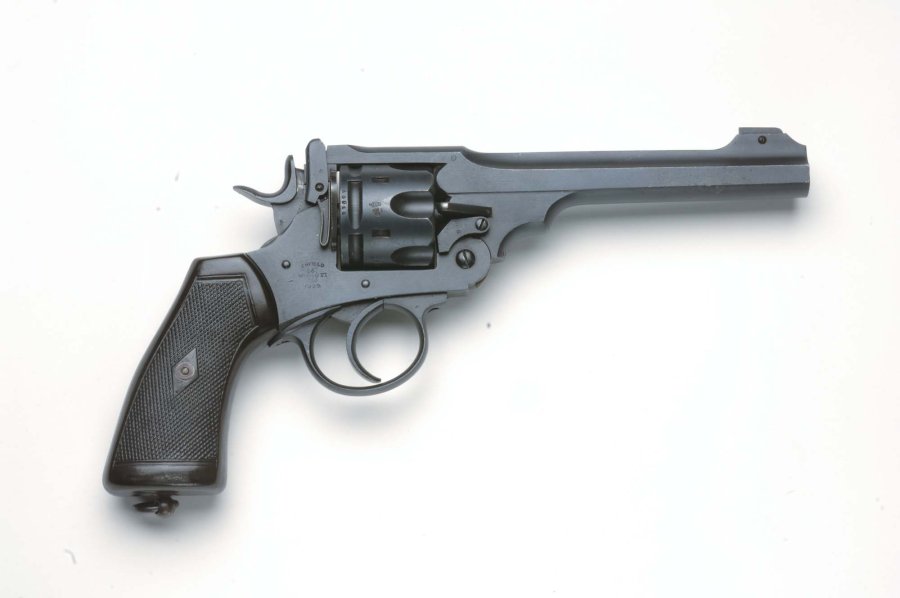
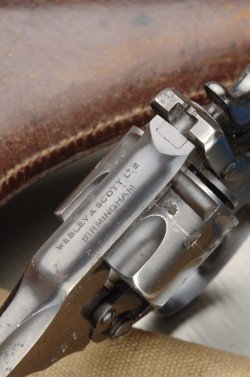
W&S: THE BIG PICTURE
In 1887, the British Army was looking for a good replacement for their old sidearm service weapons ‒ i.e. the Enfield Mk I and Mk II Revolvers ‒ whose performance had been judged quite unsatisfactory. At the time, the Webley & Scott firm was already established as a high-quality revolver manufacturer for commercial purposes. It had no competitors in a market – that of civilian weapons ‒ still not affected by strict regulations. Some military officers had even come up with the idea of buying this weapon as private citizens, and use them as their service weapon instead of the official Enfield gun. As a result, the company’s most popular product, that was the “Webley Self-Extracting Revolver” chambered in a .455 caliber, quickly attracted the interest of the army. This model already featured all the basic elements of the different versions that would later be released, namely the double-action trigger and the Top-Break swinging lock connected to the extractor. Opening the revolver frame would set the cylinder extractor in motion, violently ejecting the empty cases of the cylinder chambers. Obviously loading operations became much easier this way.
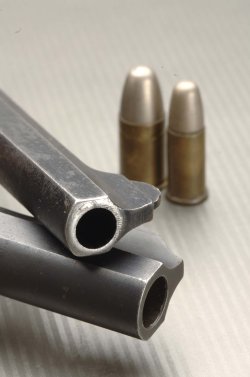
This innovative feature, together with the newly available .455 cartridge – which was to become the most powerful cartridge ever used in a Top-Break revolver ‒ won the hearts and minds of the British soldiers. The .455 Webley was a rimmed cartridge – a specific feature which made its production and its extraction easier – which could shoot a .45 caliber ball weighing 265 grains at a relatively low speed (190 meters per second), with a recoil that could be kept under control but with an overall remarkable ballistic performance. Its performance scored even higher than the .45 ACP, which was later to become the reference weapon for service handguns in the US for the following 70 years.
Officially, on November 8 of 1887, the “Webley & Scott Self-Extracting Revolver” was officially adopted as the “pistol, Webley Mk I”. The initial contract called for the delivery of ten thousand pieces at the price of about three pounds each, with at least two thousand revolvers to be delivered within eight months. Over the years, the Webley design was improved, changing its name, until its “peak” with the model Mk IV, so “perfect”, from its own point of view, that all following Webley models that replaced it had its best features.
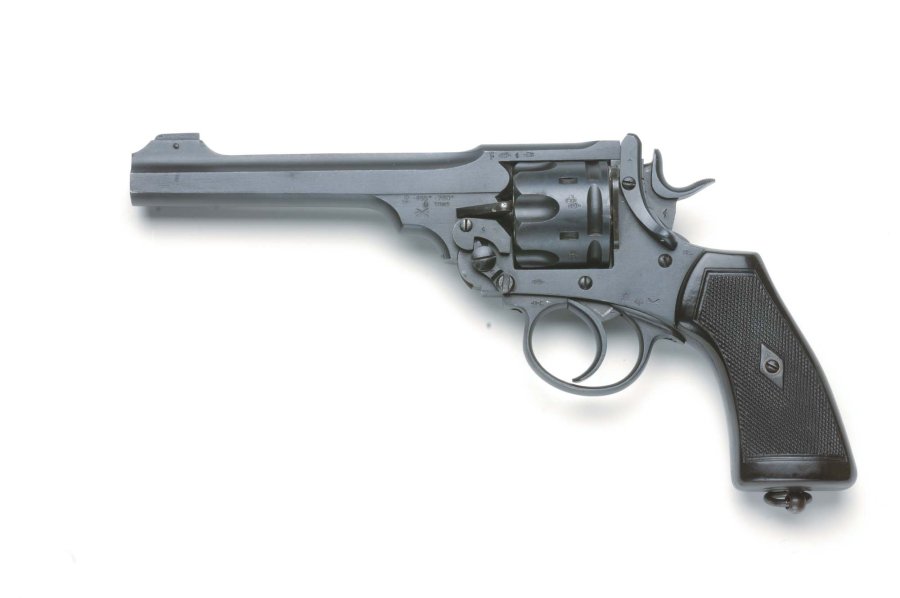
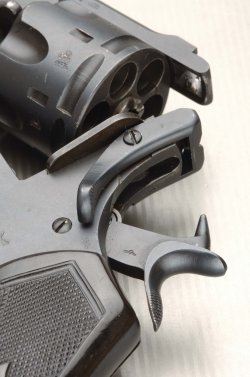
.38/200 AND THE Mk IV MODEL
The Mk IV model officially saw the light of day in 1899, as the intended design for the powerful .455 Webley caliber. The weapon had a four-inch barrel and a double-action trigger. Its glorious days can be traced back to the Anglo-Boer War, when it became the most popular weapon – it is still remembered as the “Model of the Boer War”. However, before reaching the form we all know today, it had to wait until the end of the First World War.
During World War I, the usual caliber for service handguns was still the powerful .455 Webley, which had fared so well in the battles to consolidate the British Empire and in the trenches of Europe. The .455 cartridge had an excellent range performance, high accuracy, deep penetration and high stopping power. However, during the war experience, this weapon had proved to be somehow excessive. The British Army, partly out of convenience – large segments of the army, including the most experienced officers, had been wiped out by the world conflict and the colonial wars – decided to train new recruits using a.38 caliber cartridge. The Webley & Scott thus presented a version of the Mk-IV which would fit the Smith&Wesson .38 caliber.
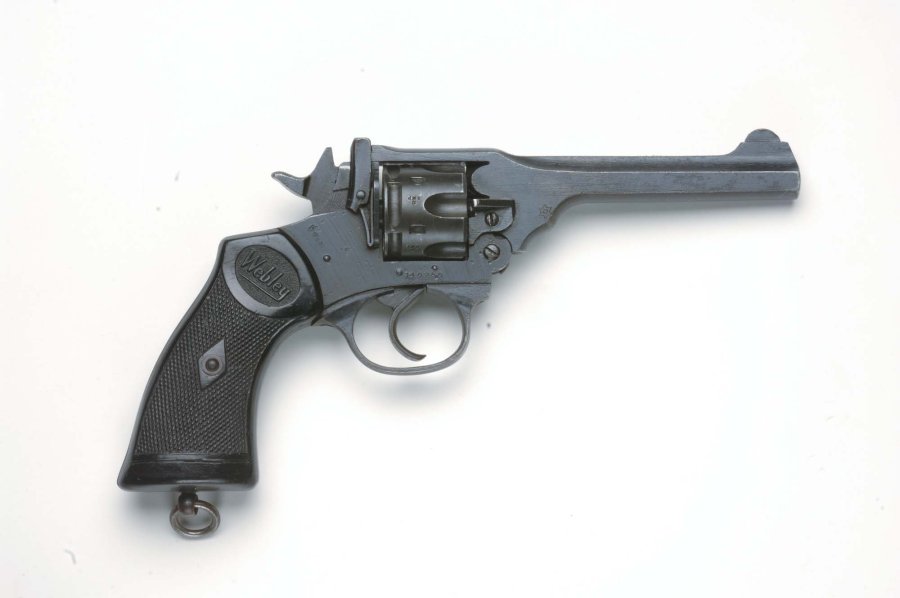
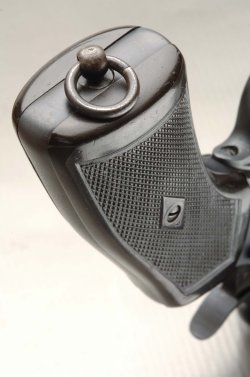
Such cartridge, which originally used black powder, was known for its quite heavy 200 grains ball. Overall the army was quite impressed by the new revolver, and promised to adopt it provided an effective ammunition could be supplied. The Kynoch company, which had already manufactured the .455 Webley caliber, met the army’s requests. The new .38 S&W cartridge, equipped with a 200 grain round nose lead ball (.38/200), could count on a 2.8 nitrocellulose “Neonite” loading that drived the bullet up to a speed of 170 m/s within a distance of 50 yards – though the bullet would get very unstable once hitting the target.
Such combination was deemed satisfactory, and the new ammunition was adopted as “cartridge gun, .380, Mk Iiz type”, changing the bullet to a 180 grain Full Metal Jacket ball.
The original 200 grain lead ball, in fact, was totally ujacketed so it could not be used in combat according to the Hague Convention.
This .38/200 caliber ammo was not something new.
The Mk-III model, introduced in 1897 and officially adopted, also used this ammo –though it had never been officially distributed to military troops. Now the time had finally come.
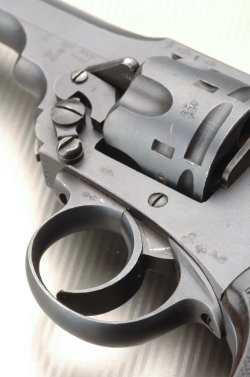
The Webley Mk-IV model was adopted in 1932, but it did not come into service in its original form. Very much to Webley & Scott’s surprise, the British government only adopted its design, handing it over to the Royal Small Arms Factory – the renowned Enfield state arsenal – which later manufactured it as Revolver # 2 Mk-1. The same arsenal modified this version in 1938 and in 1942. The first one featured a spurless hammer and a double action only trigger (the # 2 Mk-1* model), the second one was a simplified version designed for the upcoming war (No. 2 Mk-1**).
Overall, four service revolvers were used by the British during the Second World War. In fact, together with the three models mentioned above, there was another Webley model ‒ the Mk VI in .455 caliber ‒ which was to suffer the same fate as the others, that is to be produced under the same name by the Enfield arsenal. As a matter of fact, this very model became the troops’ favorite. Commonwealth soldiers, such as New Zealanders, praised its stopping power. Furthermore, .455 revolvers could be converted to .45 ACP with a fresh supply of ammo coming from U.S allies. Over the years the British started to officially adopt semi-automatic pistols, from the U.S.-made Colt M1911-A1 to the Canadian Browning High-Power, which was manufactured by the Inglis Gun Company and was to become the reference weapon of this type.
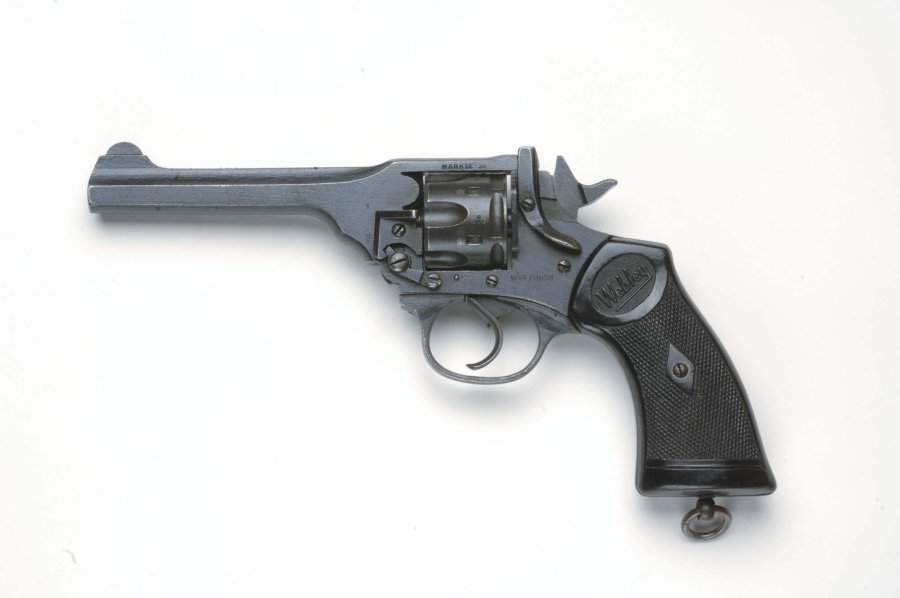
Until then the British had not had any semi-automatic handgun, if we exclude the Mauser C-96 that were taken away from the Afrikaners during the Anglo-Boer wars. For this reason, during World War II British officers often tried to grab semi-automatic weapons from soldiers of foreign armies. To this respect, the Italian Beretta 34 was highly prized.
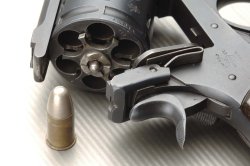
Following these events, however, Webley & Scott sued the British government. It asked for a total of 2250 pounds damages to make up for the “research and development costs” borne by the company to design the weapon. The Enfield arsenal, from its corner, defended its conduct and argued that the revolver # 2 Mk1 had been designed by Captain Boys – who at the time acted as design deputy superintendent in the arsenal, and who also designed the anti-tank gun carrying the same name – with some assistance from Webley & Scott, and not the other way around. The judges believed the version of the government, so Webley & Scott’s demands were rejected. However, the company received a financial “compensation” from the Royal Commission on Awards to Inventors, for a total of 1250 pounds. Not to mention the fact that, given the necessities of war, some Webley & Scott Mk-IV still made it to the hands of British soldiers during the conflict. The Revolver Mk-IV had an unusually long life for a weapon of its type. Considering both manufacturing lines – Webley & Scott and Enfield arsenal – this revolver was manufactured until 1978, with an estimated production of half a million guns.
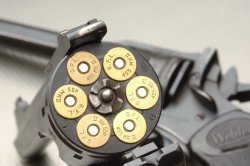
Webley & Scott was active in revolver manufacturing from 1887 to 1963, although it also produced several other types of weapons, including the Webley-Fosbery (the first “Autorevolver”) and a few semi-automatic pistols. With time, Webley’s inability to keep up with a fast-paced modernization of the market, together with a harshening of the laws regulating the civilian sale of firearms in the UK, eventually drove the company out of weapon manufacturing. The company has since then devoted its energies to compressed air guns, although the firm has been rumored to prepare its comeback with a new hunting shotgun. In any case, its revolvers have made history. Former British colonies used them long after achieving independence. The Indian Ordinance Factory Board, for example, still manufactures the .38/200 caliber ammunition, and even a revolver ‒ called IOR-Mk1 ‒ reminiscent of the Webley Mk III. Although this firearm is rarely used by the local police, it is also available on the civilian market. While Webley & Scott revolvers were worshipped by fans in UK markets in the past, the legal consequences of the Dunblane accident made everything change.
In the rest of Europe we are lucky enough to be able to still own them. Just a reminder to those who possess such revolvers: take care of them. They do not lack solidity, quite the contrary. However, they are historical pieces, they have been molded and shaped by the countless battles they fought. Like a British nobleman, they deserve and demand respect.
Technical specs
| Model | Mk IV (Webley & Scott
denomination) / Enfield Revolver N°2 Mk 1, Mk 1* e Mk 1** (Enfield denomination) |
| Manufacturer | Webley & Scott, now Webley Ltd., Birmingham, United Kingdom (http://www.webley.co.uk). From 1932 to 1978 also RSAF-Enfield (State Arsenal of Enfield Lock) |
| Caliber | .38/200 |
| Operation | Rotating cylinder with swinging opening (Top-Break) with 6-bullet capacity, automatic cartridge extraction |
| Trigger | Double action |
| Barrel length | 125 mm |
| Total length | 260 mm |
| Weight | 995 g |
Technical specs
| Model | Mk VI ( Webley & Scott denomination) / Pistol, Webley, N°1 Mk VI (Enfield denomination) |
| Manufacturer | Webley & Scott, now Webley Ltd., Birmingham, United Kingdom. From 1921 to 1926 also RSAF-Enfield |
| Caliber | .455 Webley & Scott (.455 Webley Mk II) |
| Operation | Rotating cylinder with swinging opening (Top-Break) with 6-bullet capacity, automatic cartridge extraction |
| Trigger | Double action |
| Barrel length | 152 mm (6”) |
| Total length | 286 mm |
| Weight | 1100 g |
